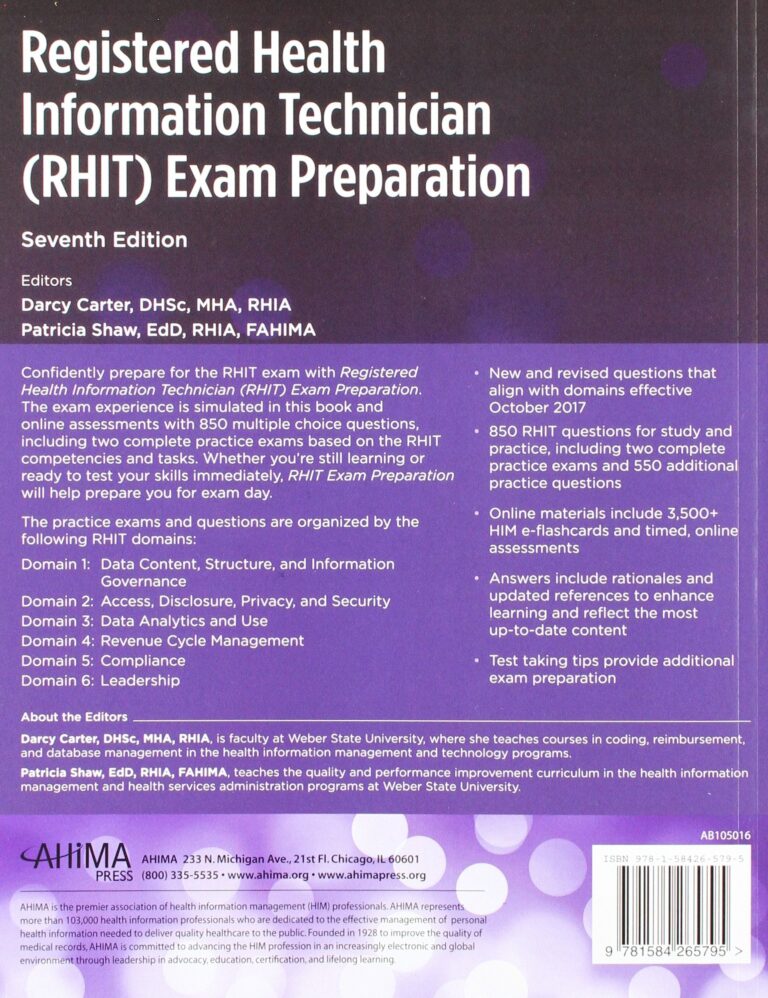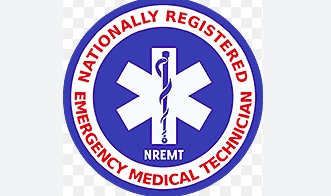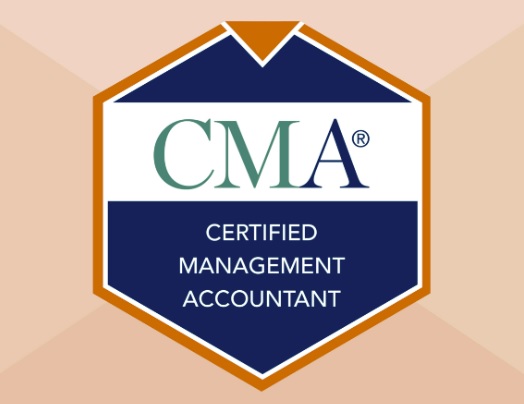In an ever-evolving job market, the quest for professional excellence has never been more important. With technological advancements and industry demands changing rapidly, the need for individuals to stand out becomes paramount.
One strategy that has gained immense traction is obtaining certifications. These credentials not only showcase your commitment to continuous learning but also bolster your qualifications, making you a prime candidate for coveted positions. In this article, we delve deeper into a range of industries and highlight the certifications that can pave your way to career success.
There are 3 Industry in which you can get a very good job if you complete some of the certifications which are mentioned in this blog. The 3 Industries are,
1. Information Technology.
2. Health and Medicine Industry.
3. Finance and Business Industry.
1. Information Technology (IT)
CompTIA Security+:

CompTIA Security+ is a vendor-neutral cybersecurity certification that validates the baseline skills necessary to perform core security functions and pursue an IT security career. It is the first security certification IT professionals should earn and establishes the core knowledge required of any cybersecurity role.
The CompTIA Security+ exam covers the following domains and topics:
- Threats, Attacks and Vulnerabilities: This includes social engineering attacks, newer denial-of-service (DDoS) attacks, and vulnerabilities found in internet of things (IoT) and embedded
- Identity and Access Management: This includes implementing identity and access management controls, and differentiating common account management practices.
- Risk Management: This includes explaining the importance of policies, plans, and procedures related to organizational security.
- Security Architecture and Engineering: This includes designing and implementing security solutions, and configuring security devices.
- Communication and Network Security: This includes securing wired and wireless networks, and understanding cryptography.
- Software Development Security: This includes securing the software development lifecycle, and identifying and mitigating software vulnerabilities.
Certified Information Systems Auditor (CISA):

The Certified Information Systems Auditor (CISA) is a globally recognized certification for information systems auditors, control professionals, and security practitioners. It is a valuable credential for anyone who wants to demonstrate their expertise in IT auditing, governance, and risk management.
The CISA exam covers a wide range of topics, including:
- IT auditing principles and concepts
- IT governance and risk management
- Information security
- IT audit techniques and tools
- IT audit reporting
To become a CISA, you must have a minimum of five years of professional experience in IT auditing, control, or security, and you must pass the CISA exam. The exam is offered in English, French, and Spanish.
The CISA certification is highly valued by employers, and it can help you advance your career in information security. If you are interested in a career in IT auditing, control, or security, I highly recommend getting the CISA certification.
Here are some of the benefits of getting the CISA certification:
- It validates your knowledge of IT auditing, governance, and risk management.
- It makes you a more marketable candidate for IT auditing, control, and security jobs.
- It can help you advance your career to more senior roles.
- It gives you access to a global community of IT auditing, control, and security professionals.
- It keeps you up-to-date on the latest IT auditing, governance, and risk management trends.
If you are interested in learning more about the CISA certification, you can visit the ISACA website.
AWS Certified Solutions Architect:

AWS certification is a foundational level certification for cloud computing professionals who want to demonstrate their ability to design and deploy scalable and cost-effective solutions on the AWS platform.
The exam covers a wide range of topics, including:
- Designing highly available and scalable solutions
- Using compute, storage, and networking services
- Building serverless applications
- Securing AWS workloads
- Cost optimization
To become an AWS Certified Solutions Architect – Associate, you must pass a single exam that consists of 65 multiple-choice questions. The exam is 180 minutes long and has a pass rate of 70%.
The AWS Certified Solutions Architect – Associate certification is a valuable asset for cloud computing professionals of all levels. It can help you get your foot in the door of a cloud computing career, and it can also help you advance your career to more senior roles. If you are interested in a career in cloud computing, I highly recommend getting the AWS Certified Solutions Architect – Associate certification.
2. Healthcare and Medical Professions
American Heart Association Basic Life Support (BLS):

Basic Life Support (BLS) is a set of lifesaving skills that can be used to help someone who is in cardiac arrest or experiencing other breathing or cardiac emergencies. BLS is taught by the American Heart Association and is the most widely recognized BLS training program in the world.
The BLS sequence consists of the following steps:
- Check for responsiveness. Gently shake the person’s shoulders and ask, “Are you okay?” If the person does not respond, move on to step 2.
- Call 911 or your local emergency number. If you are alone with the person, call 911 or your local emergency number first. If there are other people present, have someone else call while you start CPR.
- Start chest compressions. Place the heel of your hand on the center of the person’s chest, just below the nipples. Place your other hand on top of the first hand and interlock your fingers. Lock your elbows and straighten your arms. Press down on the chest using your body weight, compressing the chest by 2 inches to 2.4 inches. Allow the chest to rise completely between compressions.
- Give rescue breaths. After 30 chest compressions, give 2 rescue breaths. Pinch the person’s nose closed and cover their mouth with yours. Breathe into the person’s mouth for 1 second, and then let the air out. Repeat this 2 more times.
- Continue CPR until help arrives. Continue CPR in a ratio of 30 chest compressions to 2 rescue breaths. Do not stop CPR until help arrives or the person starts to move or breathe on their own.
It is important to remember that BLS is just a first aid measure and should not replace professional medical care. If the person does not start to respond after 5 cycles of CPR, continue CPR and wait for help to arrive.
Registered Health Information Technician (RHIT)

A Registered Health Information Technician (RHIT) is a healthcare professional who specializes in the management and analysis of health information. RHITs work in a variety of settings, including hospitals, clinics, and insurance companies. They are responsible for ensuring the accuracy and completeness of patient records, as well as coding diagnoses and procedures. RHITs may also be involved in research and quality improvement initiatives.
To become an RHIT, you must earn an associate degree in health information technology from a program accredited by the Commission on Accreditation for Health Informatics and Information Management Education (CAHIIM). You must also pass the RHIT exam administered by the American Health Information Management Association (AHIMA).
RHITs play a vital role in the healthcare system. They ensure that patient records are accurate and complete, which is essential for providing high-quality care. RHITs also help to improve the efficiency of the healthcare system by coding diagnoses and procedures.
If you are interested in a career in healthcare, RHIT is a great option. It is a rewarding career that offers good job security and opportunities for advancement.
Here are some of the key responsibilities of an RHIT:
- Administering health information systems. RHITs use a variety of software programs to manage and analyze health information. They must be proficient in these programs in order to ensure the accuracy and completeness of patient records.
- Coding diagnoses and procedures. RHITs use coding systems to classify diagnoses and procedures. This information is used to bill insurance companies and track patient care.
- Confidentially managing patient information. RHITs must handle patient information with the utmost confidentiality. They must comply with all applicable laws and regulations regarding the protection of patient privacy.
- Communicating with healthcare professionals. RHITs must be able to communicate effectively with other healthcare professionals. They must be able to explain complex medical terms and concepts in a way that is easy to understand.
Participating in quality improvement initiatives. RHITs can play a valuable role in quality improvement initiatives. They can use their knowledge of health information to identify areas for improvement and develop solutions.
Emergency Medical Technician (EMT):

An Emergency Medical Technician (EMT) is a healthcare professional who provides basic life support (BLS) and other emergency medical care to patients. EMTs are often the first medical responders to arrive on the scene of an emergency, and they play a vital role in stabilizing patients and transporting them to the hospital.
EMTs typically work in ambulances, but they may also work in fire departments, hospitals, and other healthcare settings. They must be able to assess patients’ conditions, provide BLS, and operate medical equipment. EMTs must also be able to communicate effectively with patients, families, and other healthcare professionals.
To become an EMT, you must complete a training program that is accredited by the National Registry of Emergency Medical Technicians (NREMT). The NREMT offers three levels of EMT certification:
- EMT-Basic: This is the entry-level certification for EMTs. EMT-Basics can provide BLS and other basic emergency medical care.
- EMT-Intermediate: This certification allows EMTs to provide more advanced medical care, such as intravenous therapy and medication administration.
- EMT-Paramedic: This is the highest level of EMT certification. Paramedics can provide the most advanced medical care, such as cardiac monitoring and defibrillation.
EMTs are in high demand, and the job outlook for EMTs is expected to grow faster than average in the coming years. If you are interested in a career in emergency medical services, becoming an EMT is a great way to get started.
3. Business and Management Arena
Certified Management Accountant (CMA):

A Certified Management Accountant (CMA) is a professional accountant who specializes in financial analysis, planning, and decision-making. CMAs work in a variety of industries, including accounting, finance, and consulting. They are responsible for providing financial information and advice to businesses and organizations.
To become a CMA, you must pass the CMA exam, which is administered by the Institute of Management Accountants (IMA). The exam covers a wide range of topics, including financial accounting, managerial accounting, economics, and business law.
CMAs are in high demand, and the job outlook for CMAs is expected to grow faster than average in the coming years. If you are interested in a career in accounting or finance, becoming a CMA is a great way to get started.
Here are some of the key benefits of becoming a CMA:
- Validates your knowledge of financial accounting and management accounting: The CMA exam covers a wide range of topics that are essential for management accountants. Passing the exam shows that you have the knowledge and skills necessary to succeed in this field.
- Makes you a more marketable candidate for accounting and finance jobs: CMAs are in high demand, and many employers look for this certification when hiring for accounting and finance positions. Having your CMA can give you a competitive edge in the job market.
- Can help you advance your career to more senior roles: CMAs are often promoted to more senior roles, such as financial analyst, controller, or CFO. Having your CMA can help you qualify for these positions.
- Gives you access to a global community of management accountants: The IMA has a large and active community of CMAs from all over the world. This community can provide you with support, networking opportunities, and continuing education resources.
Keeps you up-to-date on the latest accounting and finance trends: The IMA provides its members with access to a variety of resources, including publications, webinars, and online courses. These resources can help you stay up-to-date on the latest accounting and finance trends.
Google Analytics Individual Qualification (GAIQ):

Google Analytics Individual Qualification (GAIQ) is a certification that demonstrates your ability to use Google Analytics to measure website traffic and analyze data. It is a valuable credential for anyone who wants to work in marketing, analytics, or data science.
The GAIQ exam covers a wide range of topics, including:
- Planning and principles: This includes setting goals for your website, choosing the right metrics and dimensions, and creating reports.
- Implementation and data collection: This includes installing Google Analytics on your website, configuring settings, and collecting data.
- Configuration and administration: This includes managing users, permissions, and filters.
- Conversion and attribution: This includes understanding how users interact with your website and attributing conversions to different marketing channels.
Reports, metrics, and dimensions: This includes understanding the different types of reports, metrics, and dimensions in Google Analytics.
Six Sigma Green Belt:

A Six Sigma Green Belt is a certification that demonstrates your knowledge of Six Sigma methodology and your ability to use it to improve processes. It is a valuable credential for anyone who wants to work in quality assurance, process improvement, or manufacturing.
Six Sigma is a set of tools and techniques that can be used to improve the quality of products and services. It is based on the concept of reducing variation in processes, which can lead to fewer defects and improved customer satisfaction.
The Six Sigma Green Belt certification is typically a two-week course that covers the following topics:
- The Six Sigma methodology: This includes the DMAIC (Define, Measure, Analyze, Improve, and Control) process and the different tools and techniques used in each step.
- Problem-solving skills: This includes how to identify and define problems, collect and analyze data, and develop and implement solutions.
- Communication skills: This includes how to communicate effectively with stakeholders and present findings.
4. Creative and Design Field
- HubSpot Content Marketing Certification: In the age of content-driven marketing, this certification highlights your prowess in creating and implementing effective content strategies.
- Autodesk Certified Professional (ACP): For architects, engineers, and designers, ACP certification in software like AutoCAD validates your proficiency in using complex design tools.
- Certified Web Developer: As web development gains significance, this certification demonstrates your ability to create responsive and user-friendly websites using modern coding languages.
Certifications have emerged as gateways to success in various industries. They signify your dedication, expertise, and commitment to staying current in a rapidly evolving world. The path to certification might be challenging, but the rewards are immense. Research meticulously, select certifications aligned with your career aspirations, and invest time in thorough preparation.
Your journey toward a successful career equipped with valuable certifications starts now. Remember, the dedication you put in today will shape your achievements tomorrow.

